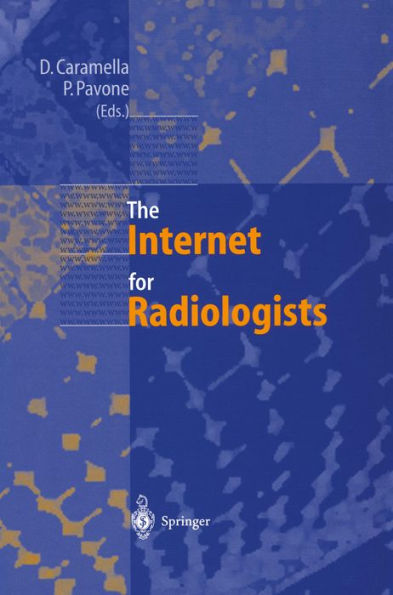The Internet for Radiologists
Davide Caramella . Steffen Achenbach The world around us is changing at an unparalleled pace. It is difficult to un derstand and describe the meaning of this process as no other revolution has involved so many people in such a short time. In particular, the Internet is about to influence all aspects of our lives. In the late 1700s, the "industrial revolution" forced societies that pre viously lived on agricultural production to rethink the way they worked. The rapid speed of change also involved non-technical fields: new cities flour ished, political systems were changed, the importance of the family was chal lenged, wars of a new size shook the world and even landscapes were altered. After centuries of relatively stable economical and sociological conditions, people had to adjust to a new world in no more than a few decades. The "information revolution" is not willing to give us as much time. This is demonstrated by the short history of the World Wide Web (WWW) which started in 1990 and is growing so quickly that the users can only be esti mated approximately (the last estimate that could be found at http:// etrg. findsvp. com put the number of WWW users in excess of 50 Million in July 1997). Also in the field of radiology, a spectacular growth took place in the last few years: in a paper published in the American Journal of Roentgen ology (AJR), K. W.
1113899099
The Internet for Radiologists
Davide Caramella . Steffen Achenbach The world around us is changing at an unparalleled pace. It is difficult to un derstand and describe the meaning of this process as no other revolution has involved so many people in such a short time. In particular, the Internet is about to influence all aspects of our lives. In the late 1700s, the "industrial revolution" forced societies that pre viously lived on agricultural production to rethink the way they worked. The rapid speed of change also involved non-technical fields: new cities flour ished, political systems were changed, the importance of the family was chal lenged, wars of a new size shook the world and even landscapes were altered. After centuries of relatively stable economical and sociological conditions, people had to adjust to a new world in no more than a few decades. The "information revolution" is not willing to give us as much time. This is demonstrated by the short history of the World Wide Web (WWW) which started in 1990 and is growing so quickly that the users can only be esti mated approximately (the last estimate that could be found at http:// etrg. findsvp. com put the number of WWW users in excess of 50 Million in July 1997). Also in the field of radiology, a spectacular growth took place in the last few years: in a paper published in the American Journal of Roentgen ology (AJR), K. W.
99.0
In Stock
5
1

The Internet for Radiologists

The Internet for Radiologists
99.0
In Stock

Product Details
| ISBN-13: | 9783642598371 |
|---|---|
| Publisher: | Springer-Verlag New York, LLC |
| Publication date: | 12/06/2012 |
| Sold by: | Barnes & Noble |
| Format: | eBook |
| File size: | 18 MB |
| Note: | This product may take a few minutes to download. |
From the B&N Reads Blog
